Arm Neoverse N2
Aside from the Neoverse V1 we covered on the previous page, perhaps the bigger announcement is on the Arm Neoverse N2. The N2 is an Armv9 design that offers major performance improvements over the N1 cores shipping in current Arm server designs.
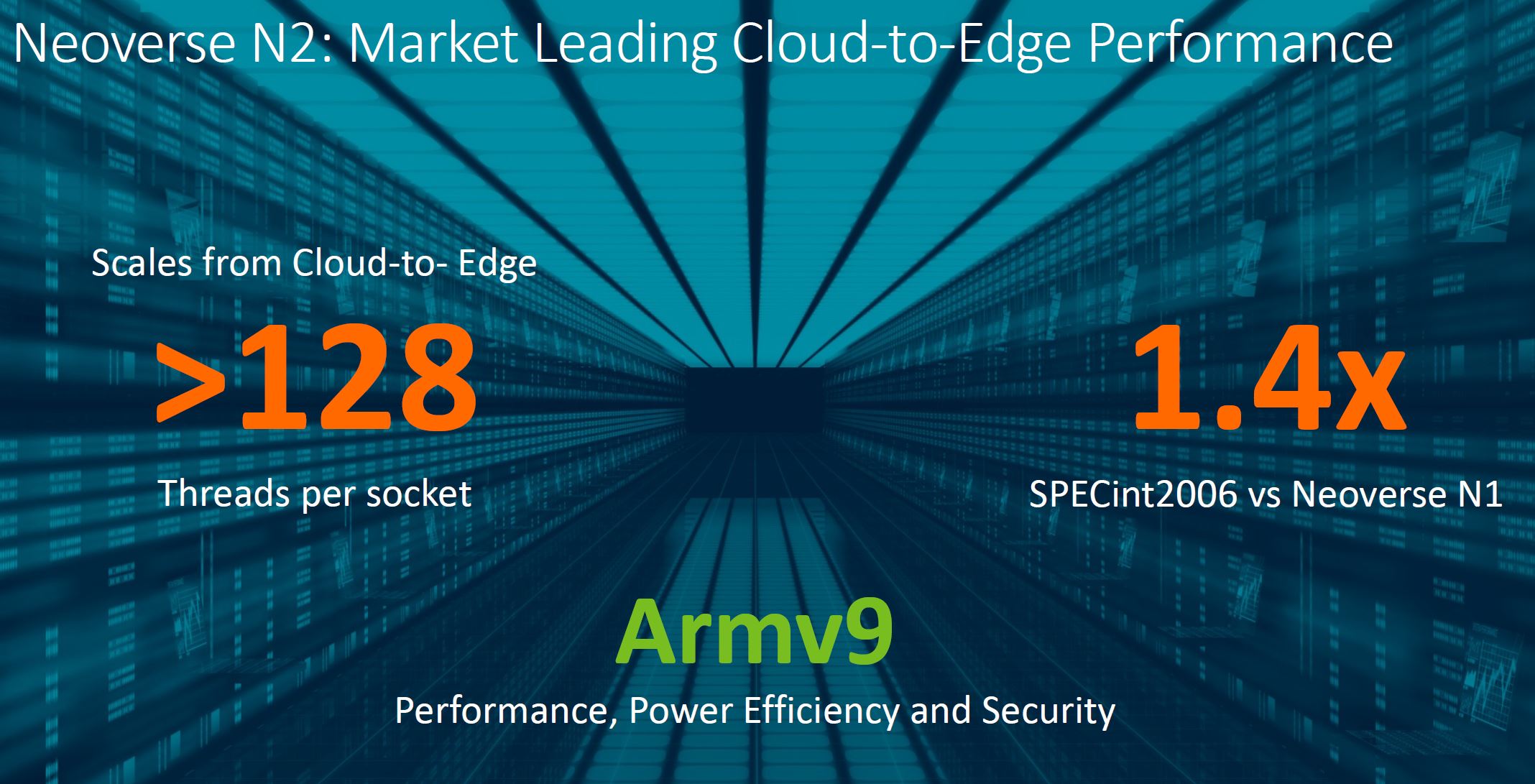
Arm puts the N-series between the all-out performance-focused V-series and the ultra-efficient E-series. These are the cores mainstream cloud processors are built on.
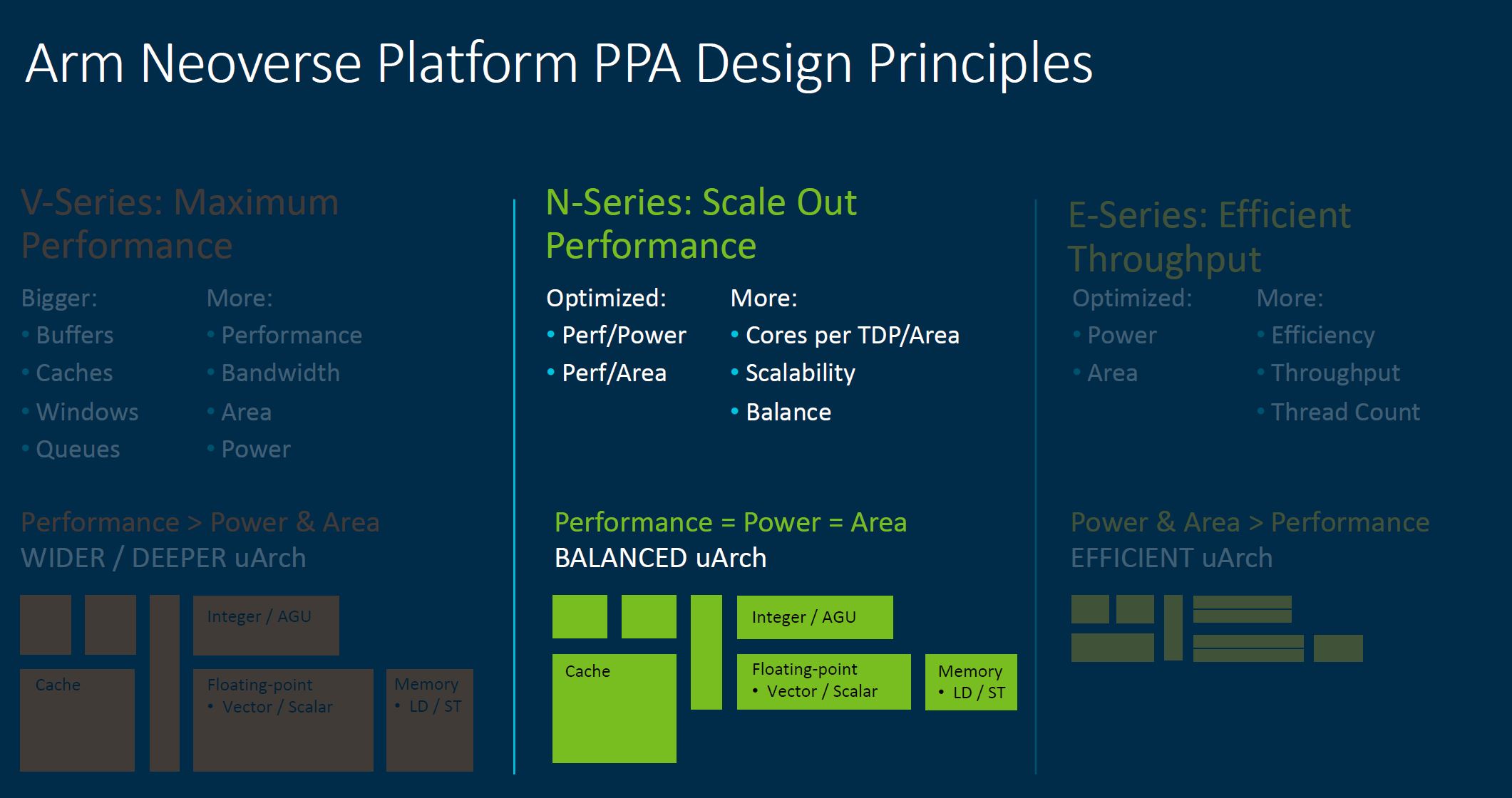
Perhaps the key point of the N2 is that it offers more performance per clock while also offering more cores to build more scalable and efficient systems.
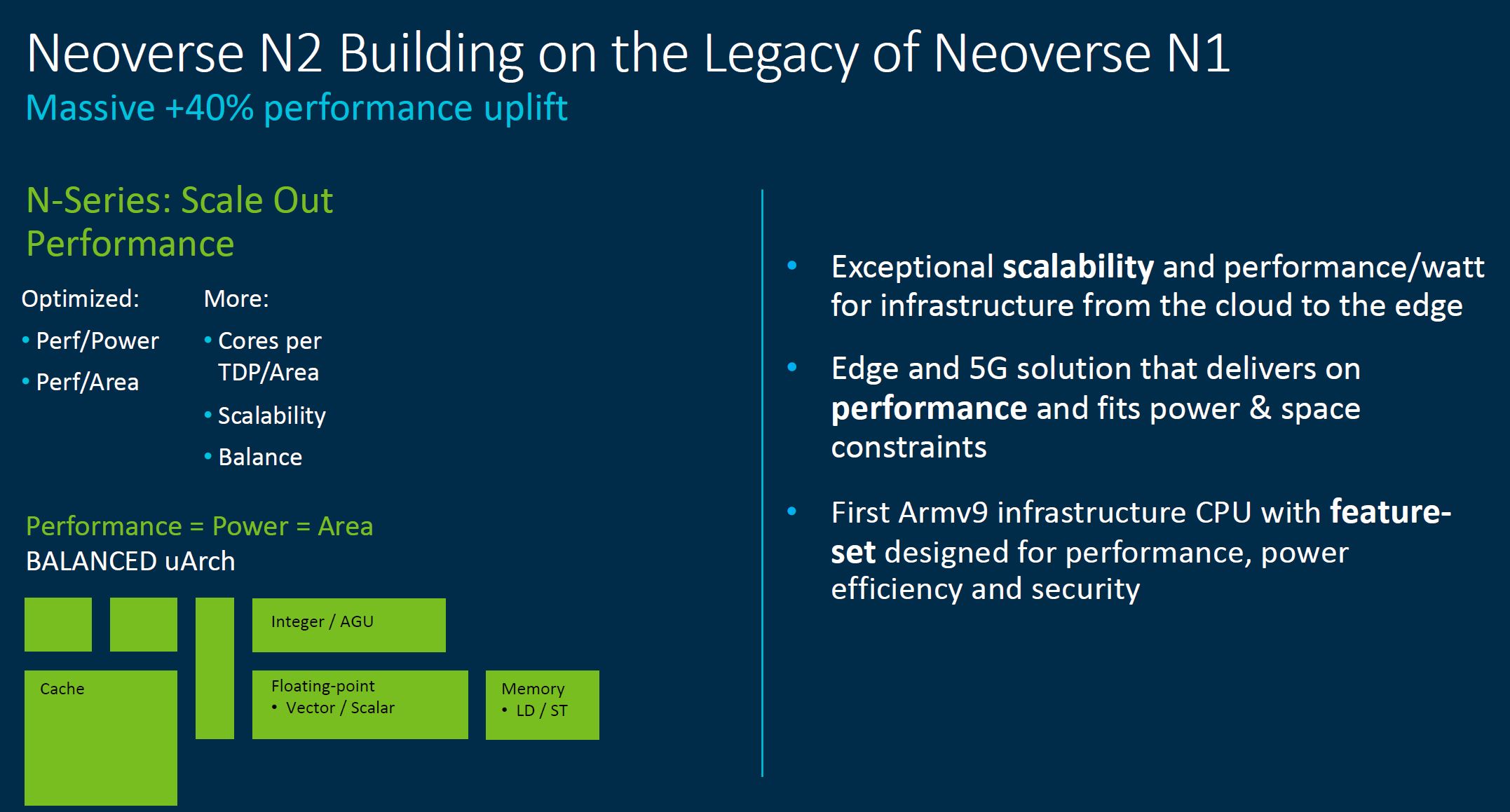
Arm sees the N2 covering a wide array of use cases from the edge to the cloud. For heavy SVE HPC workloads, the V1 is still the better choice.
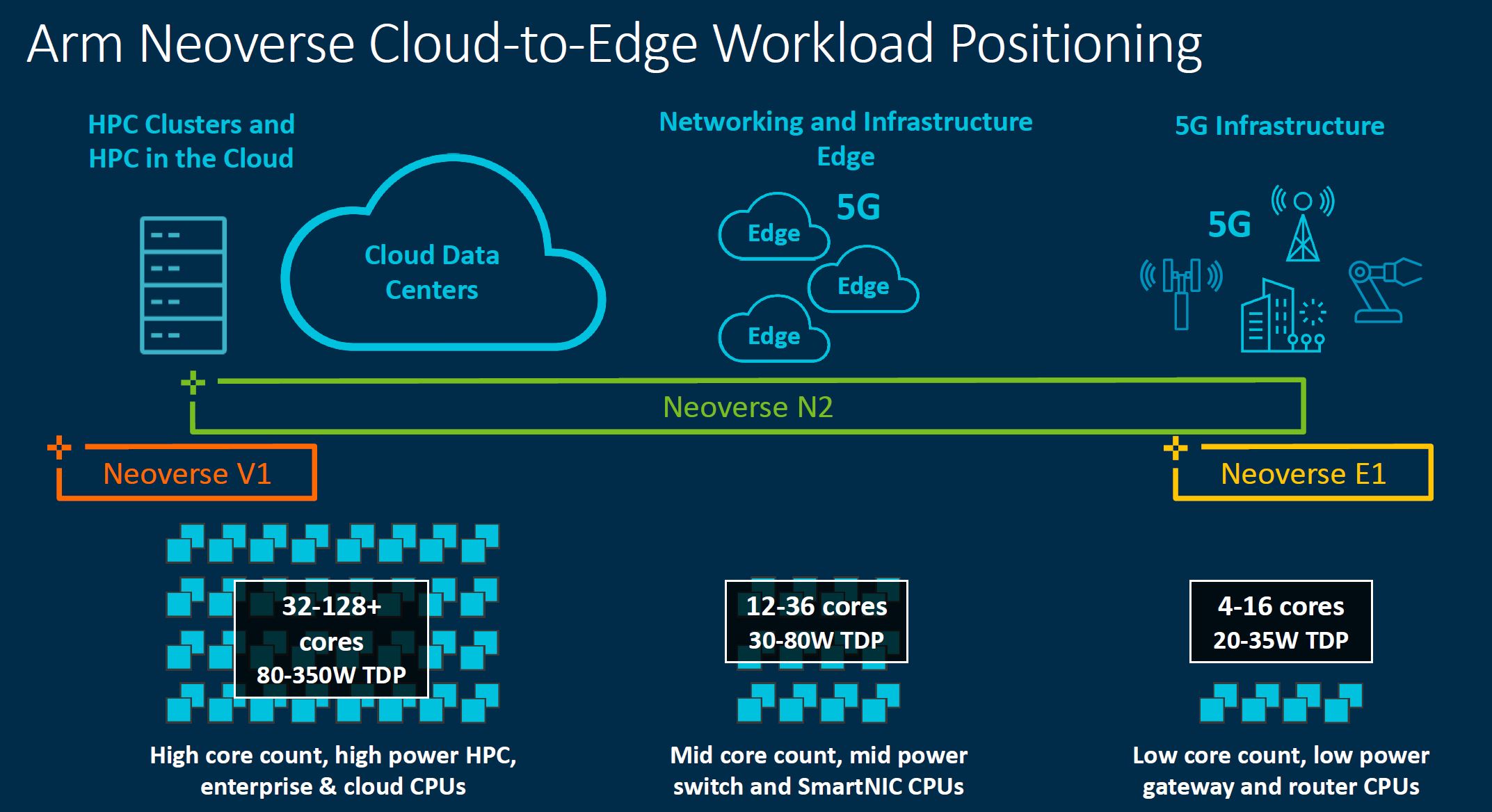
The Neoverse N2 is designed to still be a single thread per core design, but it is also designed to integrate new technologies and accelerators.
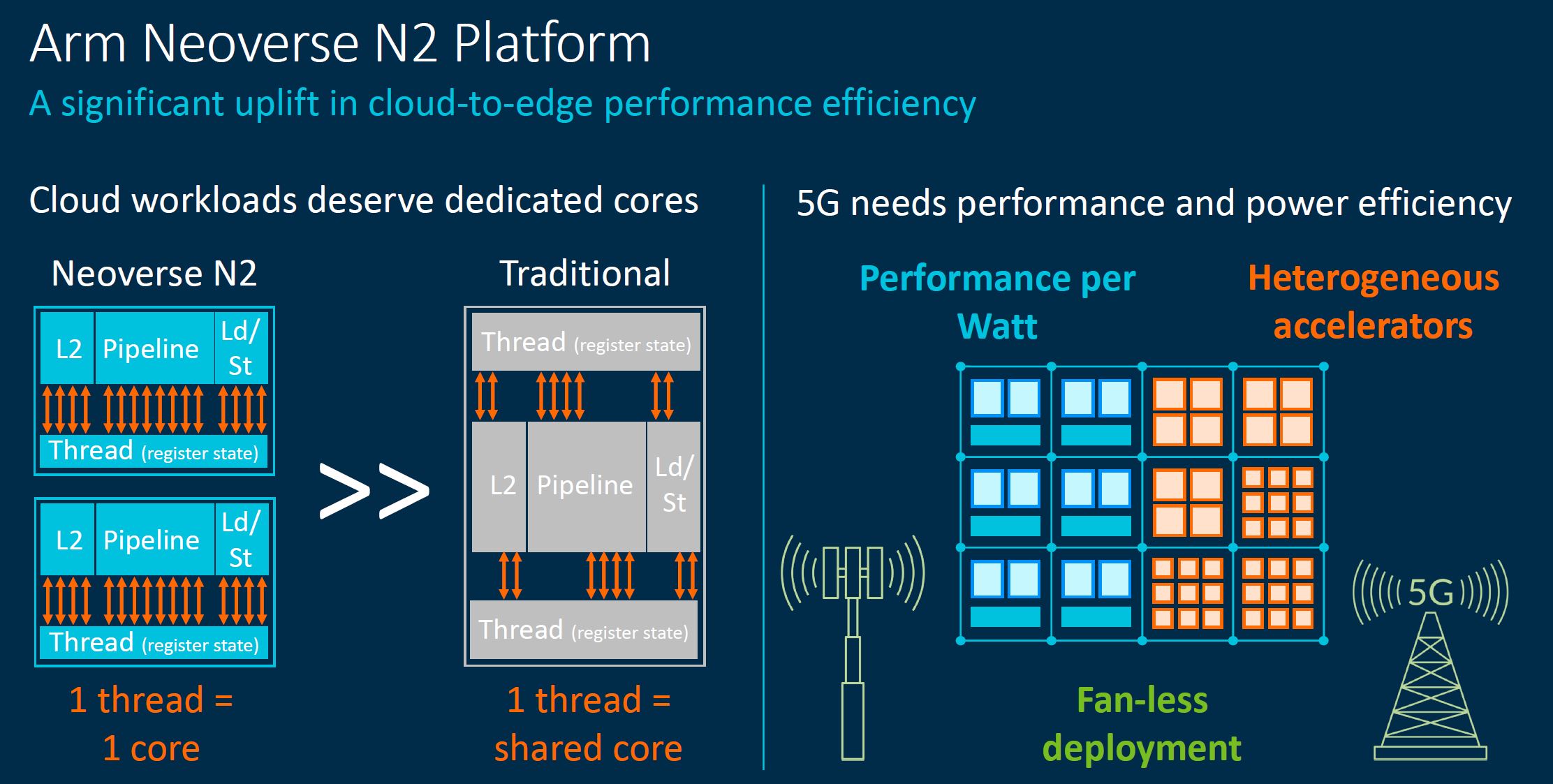
One of the new technologies is 5nm process. Apple is already using 5nm, but this is perhaps 5nm for the “everyone else” in the server industry. We also expect AMD to have a 5nm EPYC in the future for some perspective.
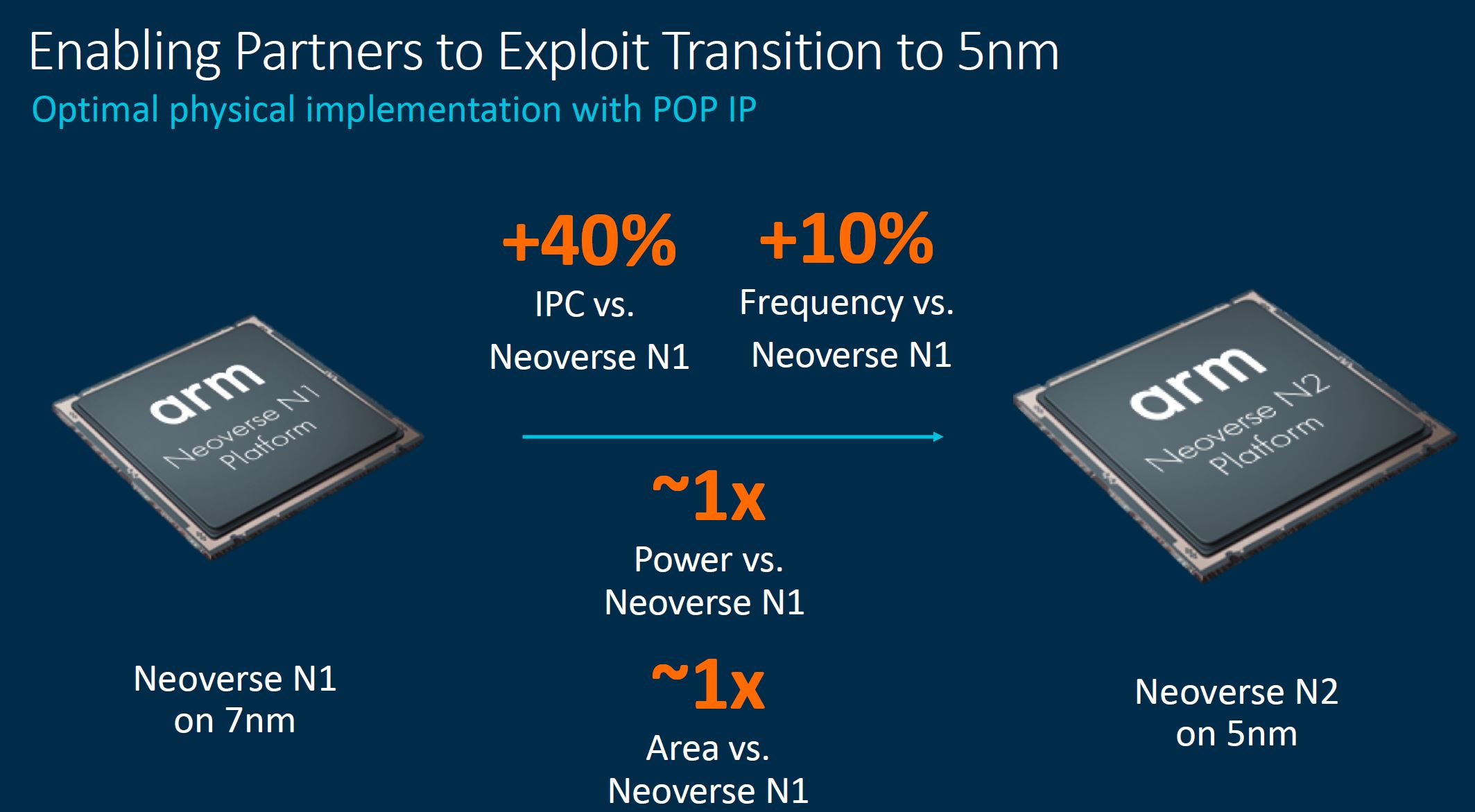
Arm does not make physical processors, but it does make reference designs that help its customers quickly get to designs. For example, One can see the PCIe/ CXL ports and the memory as 3rd party IP in the reference design, but Arm can help facilitate integrating that IP.
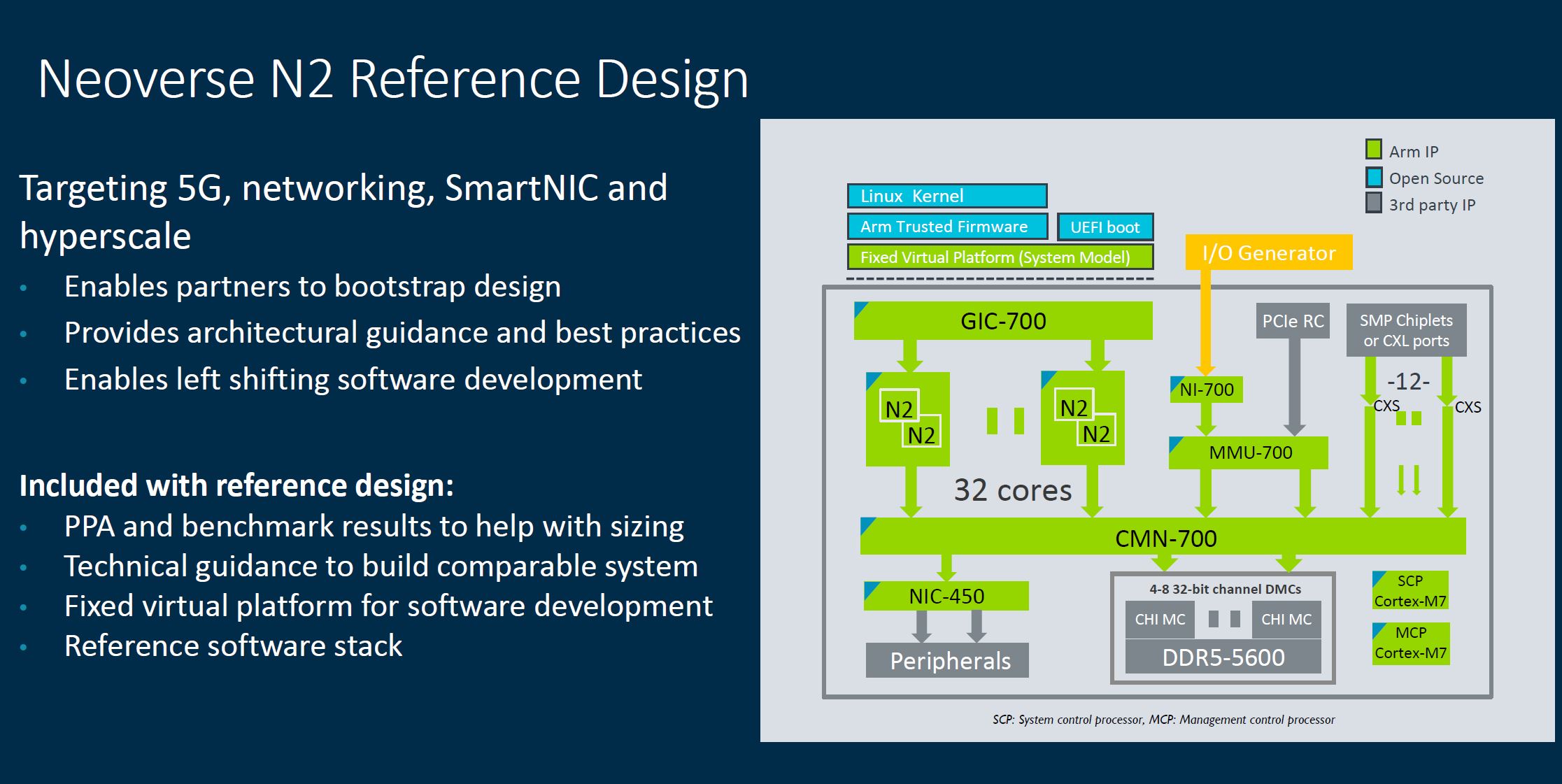
There are several new advancements in N2 from the new Armv9 to the platform around it. One may see the CMN-700 referenced. We are going into that in more detail on the next page.
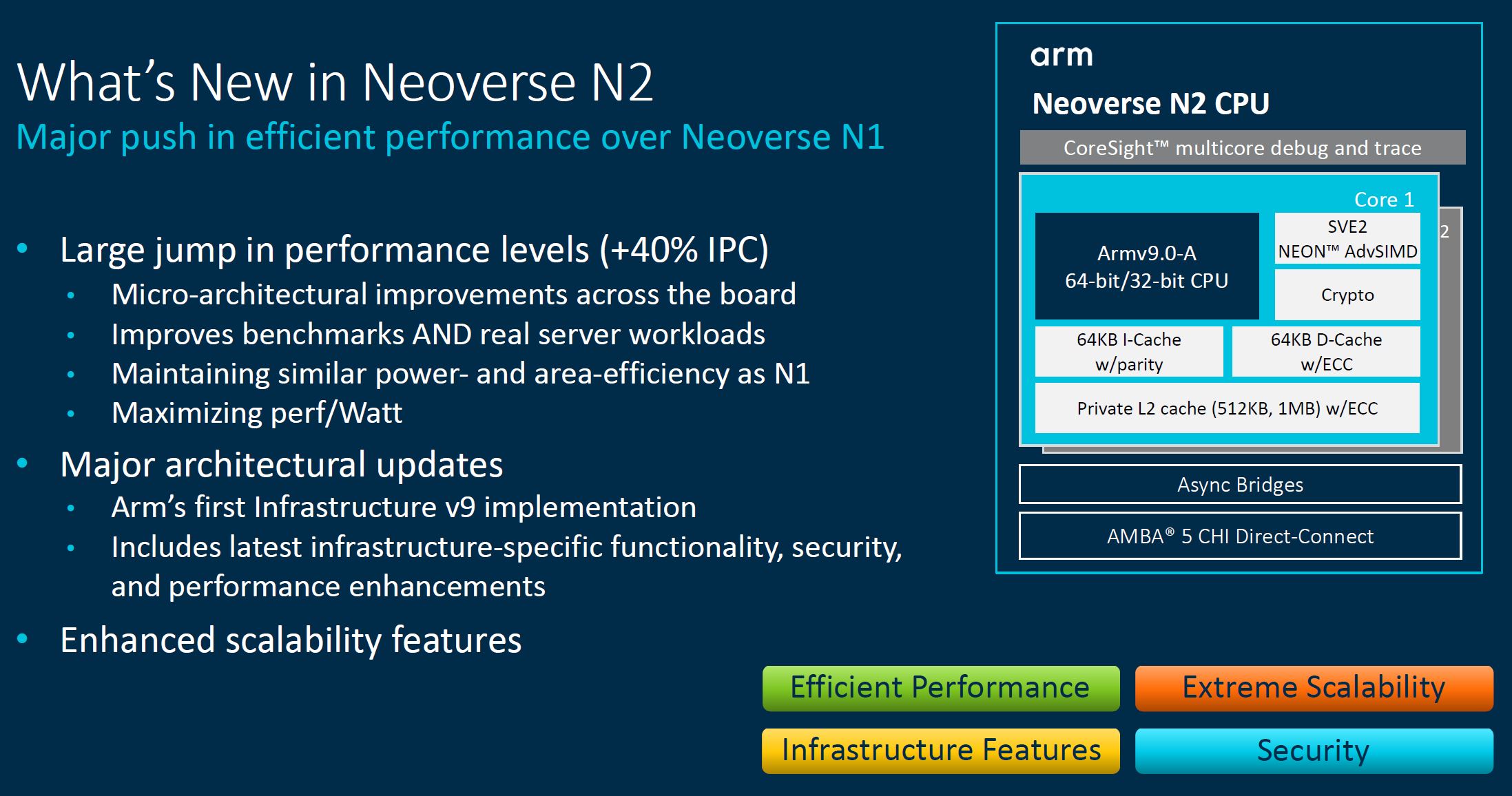
While Arm has much more performance than the N1, the other side to this is that the N2 is designed to also scale to more cores than the V1 and be more efficient with its performance design.
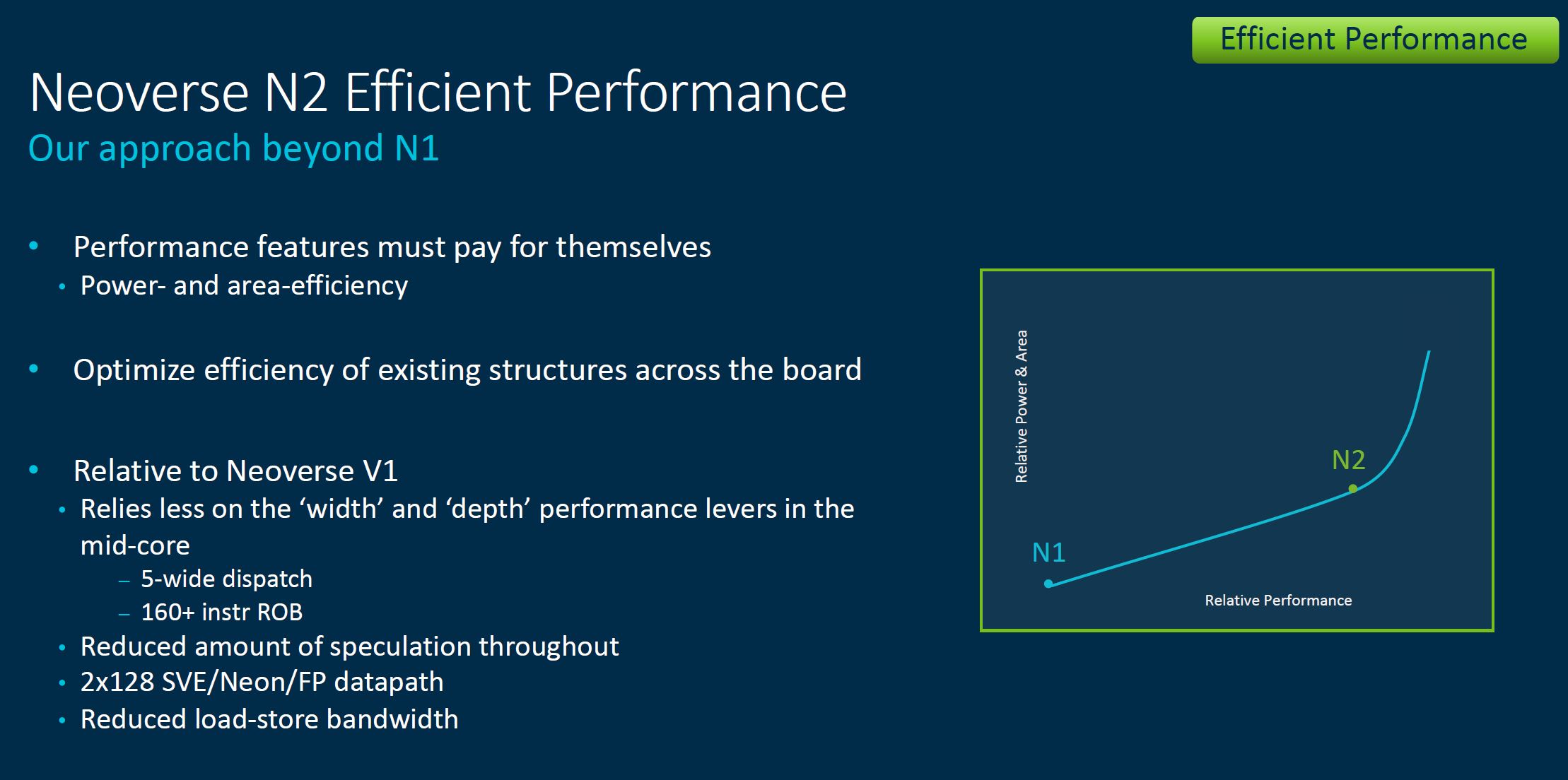
Given the order in which IP was made available, the N2 is a semi-successor to the V1 as well. The V1 design was allegedly completed and released well before the N2 so the N2 benefited from some of the V1 improvements.
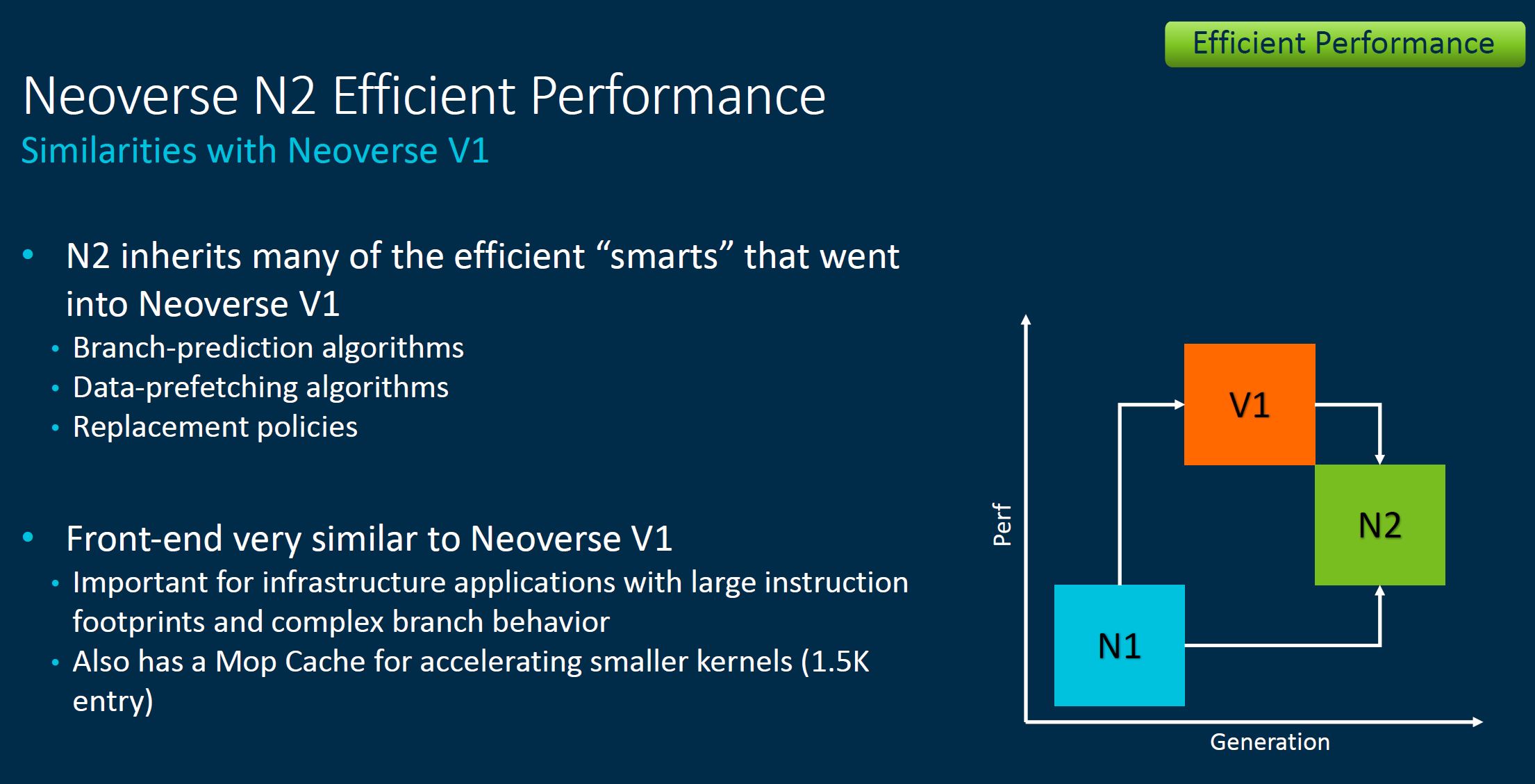
With the N-series, power management is always a big deal. These are designed for low-power edge to high-core count designs so the power per core is a major consideration.
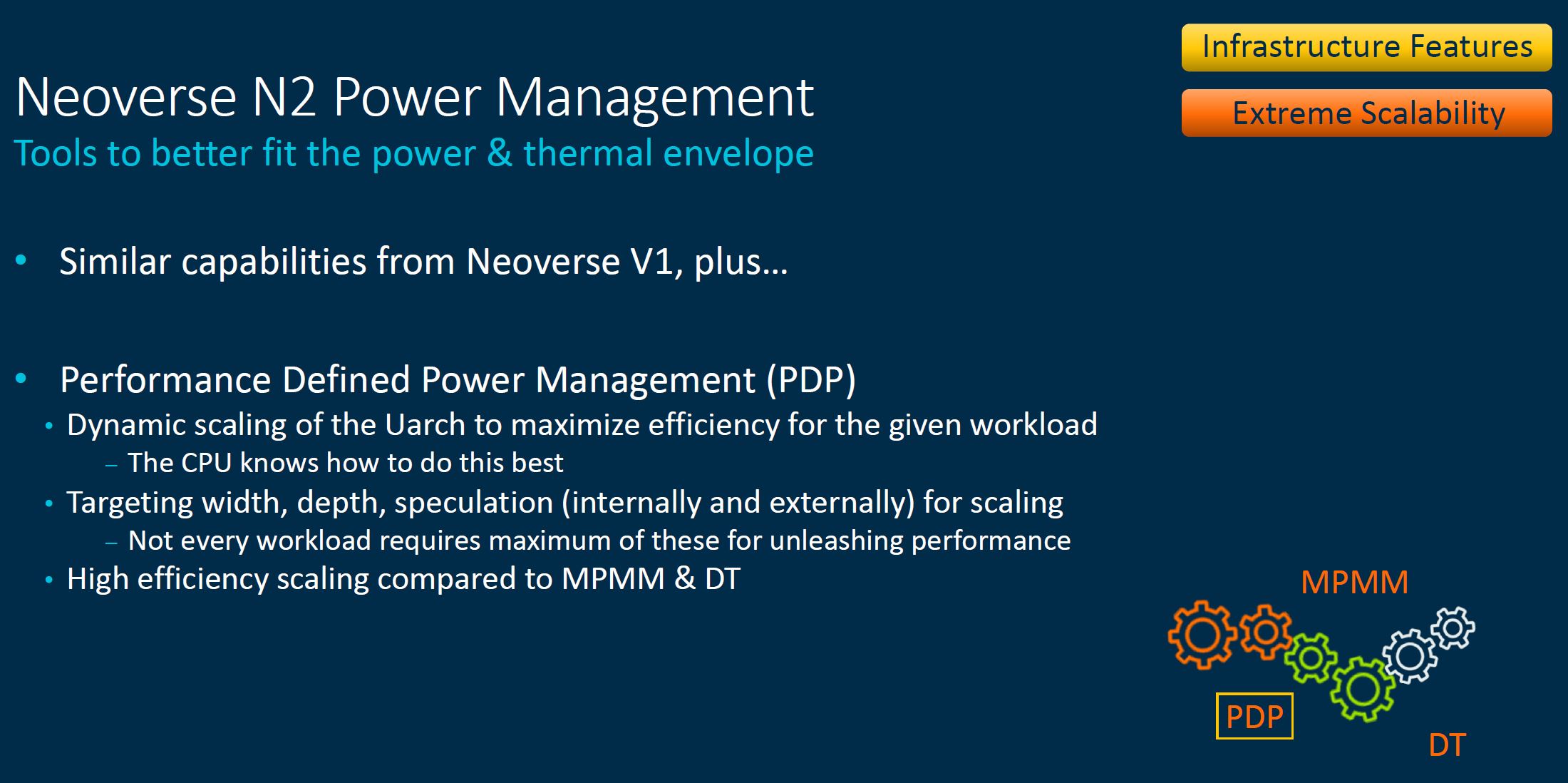
Arm says that the N2 is about 25% smaller than the V1, but larger/ more efficient than the N1. Still, performance is scaling with the area and power used with N2 where the V1 is sacrificing that efficiency for maximum performance.
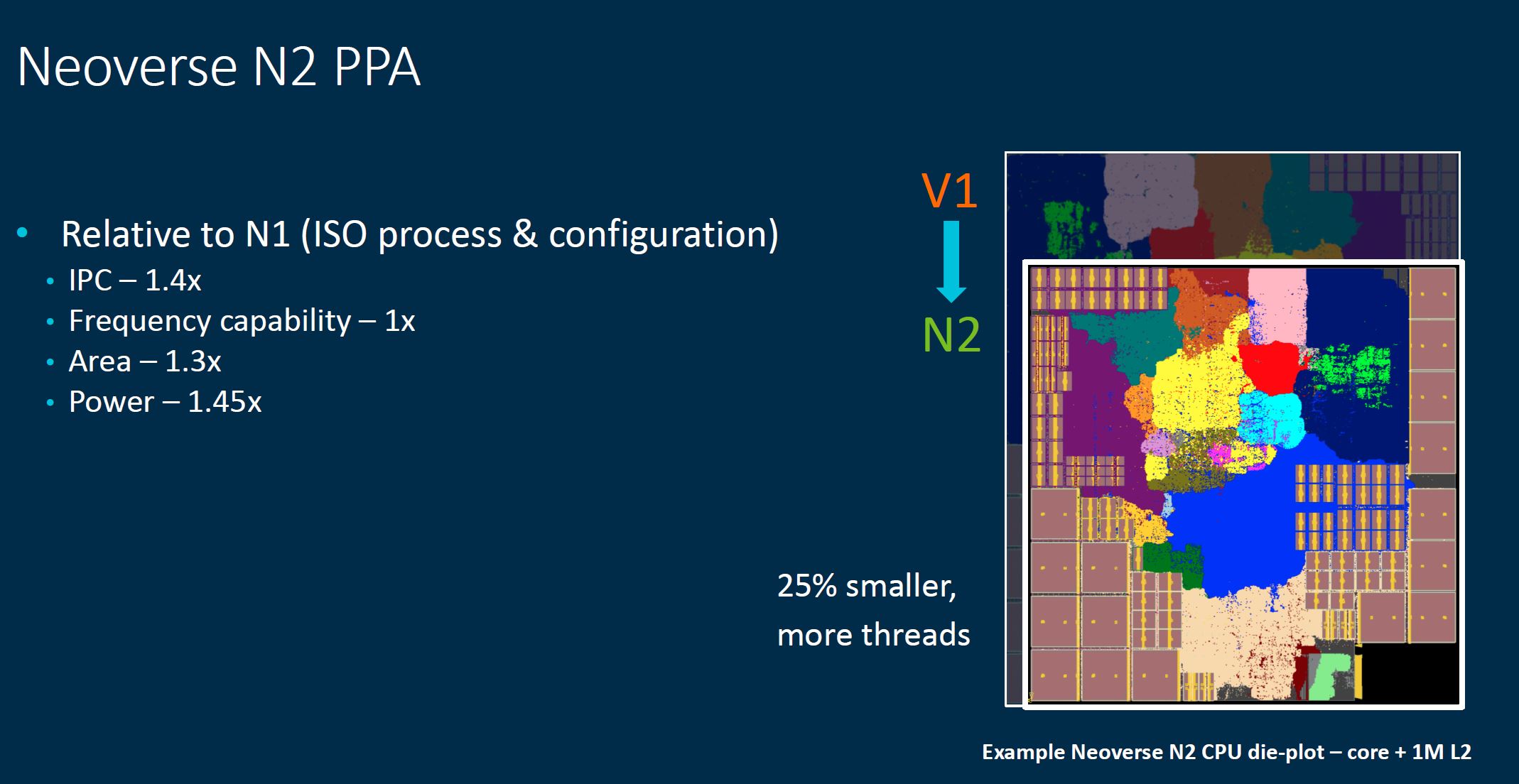
As mentioned earlier, one of the biggest features is that this is an Armv9 CPU. Armv9 is Arm’s vision for the next decade so this is a big deal. Eventually, we will see Arm licensees focus on Armv9 as they have with Armv8 for the past several years.
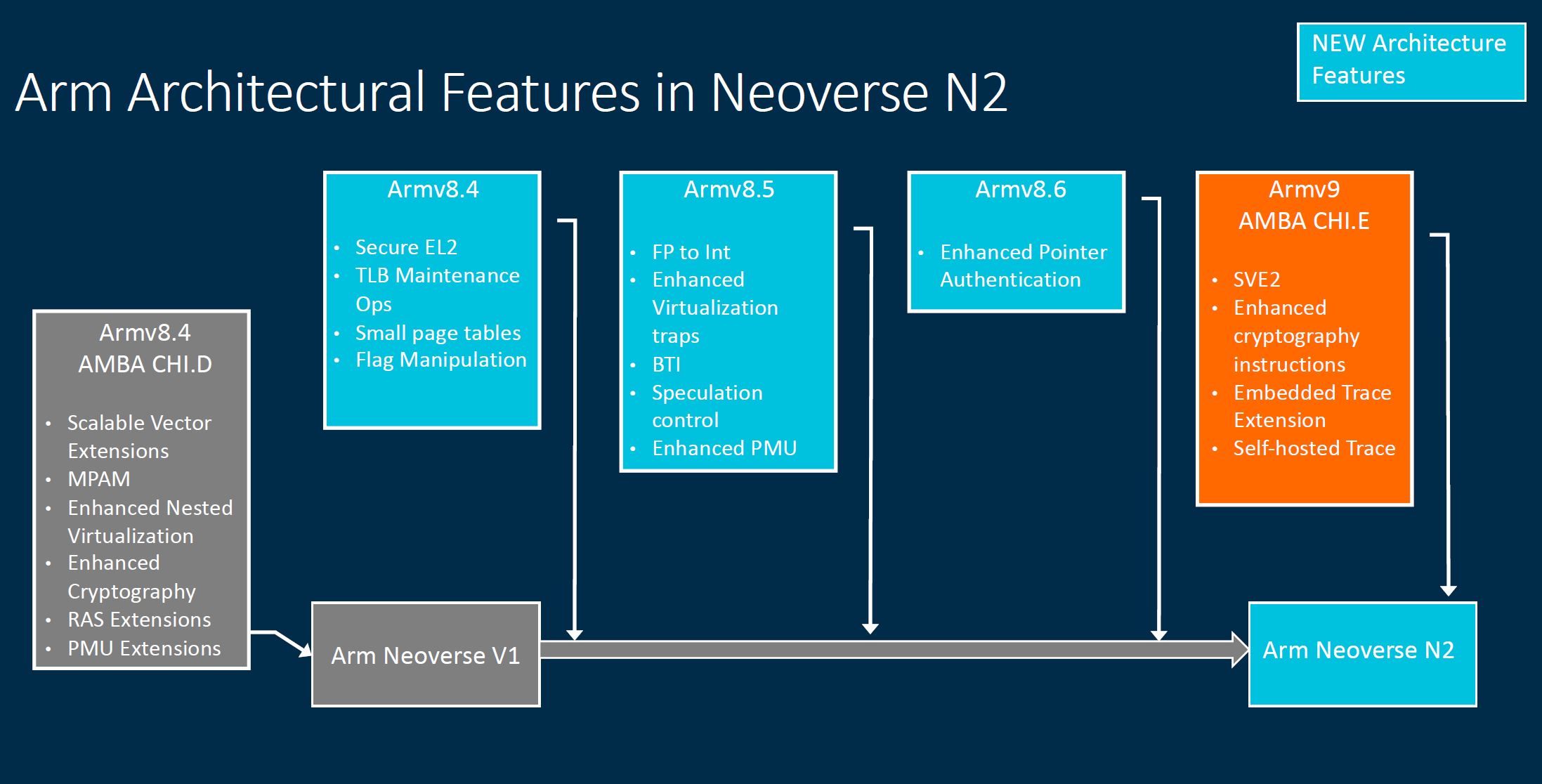
We are getting into a part of Arm’s presentation where the slides clearly depict the messaging, so we are going to largely let our readers skim slides instead of duplicating them. The new Neoverse N2 cores have a number of features, but a key aspect is that Arm is designing for more scalability, more features, better security, and better peformance.
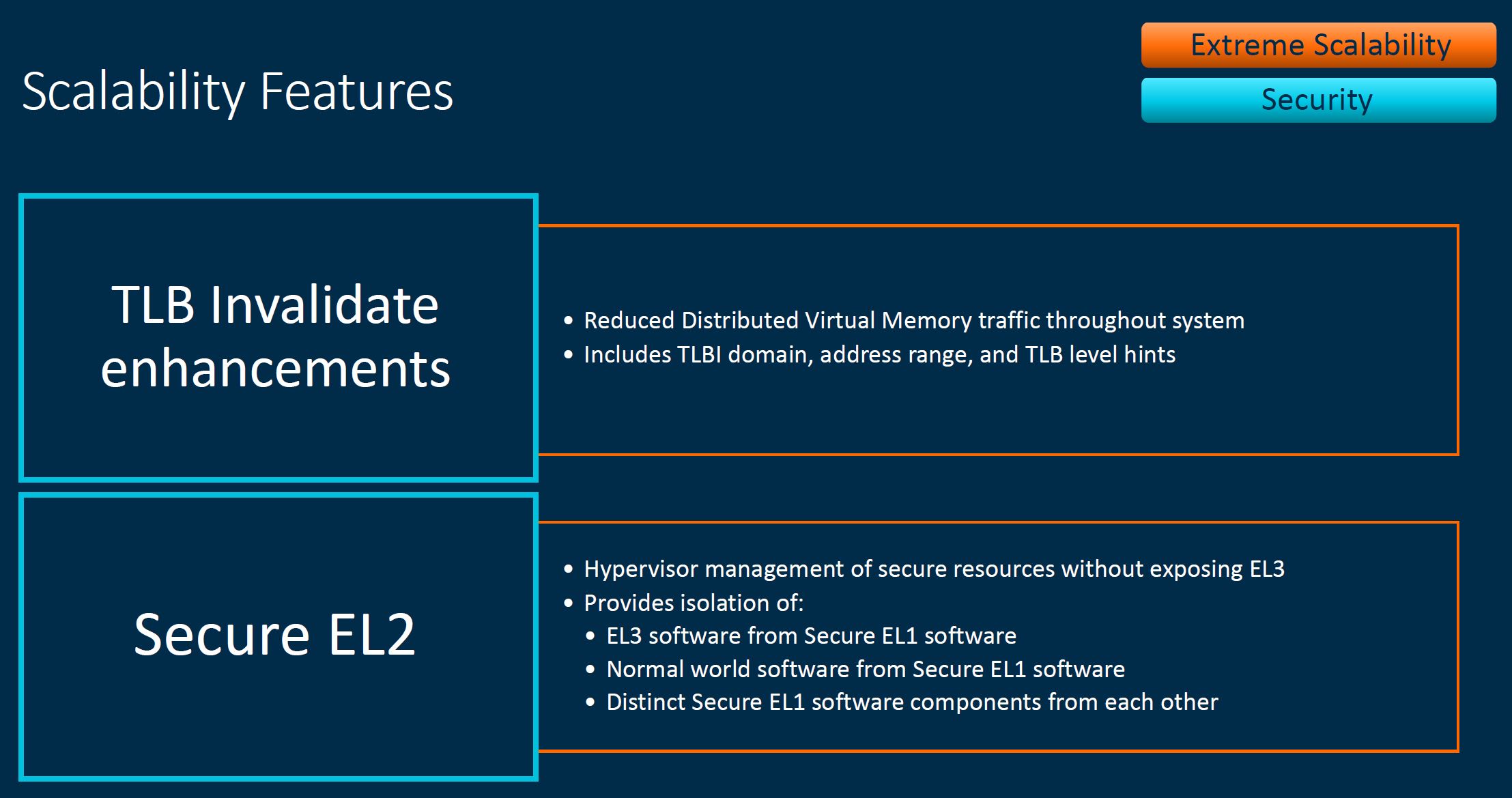
On the security side, Arm is taking special care to focus on memory safety as many attacks happen in this domain on current processors.
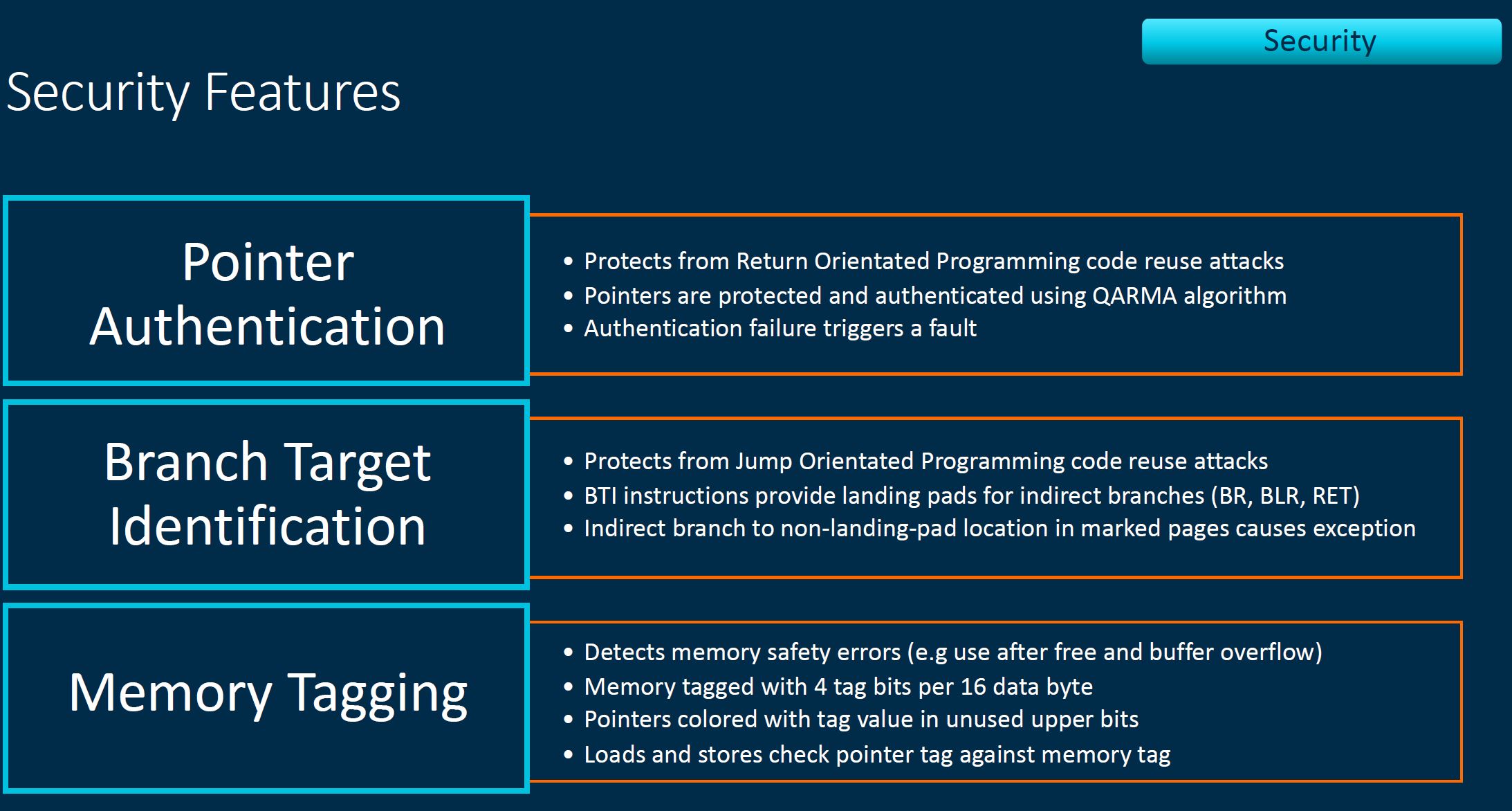
Arm’s major focus for V1 is SVE. With N2 we get SVE2 which is designed for a broader range of acceleration.
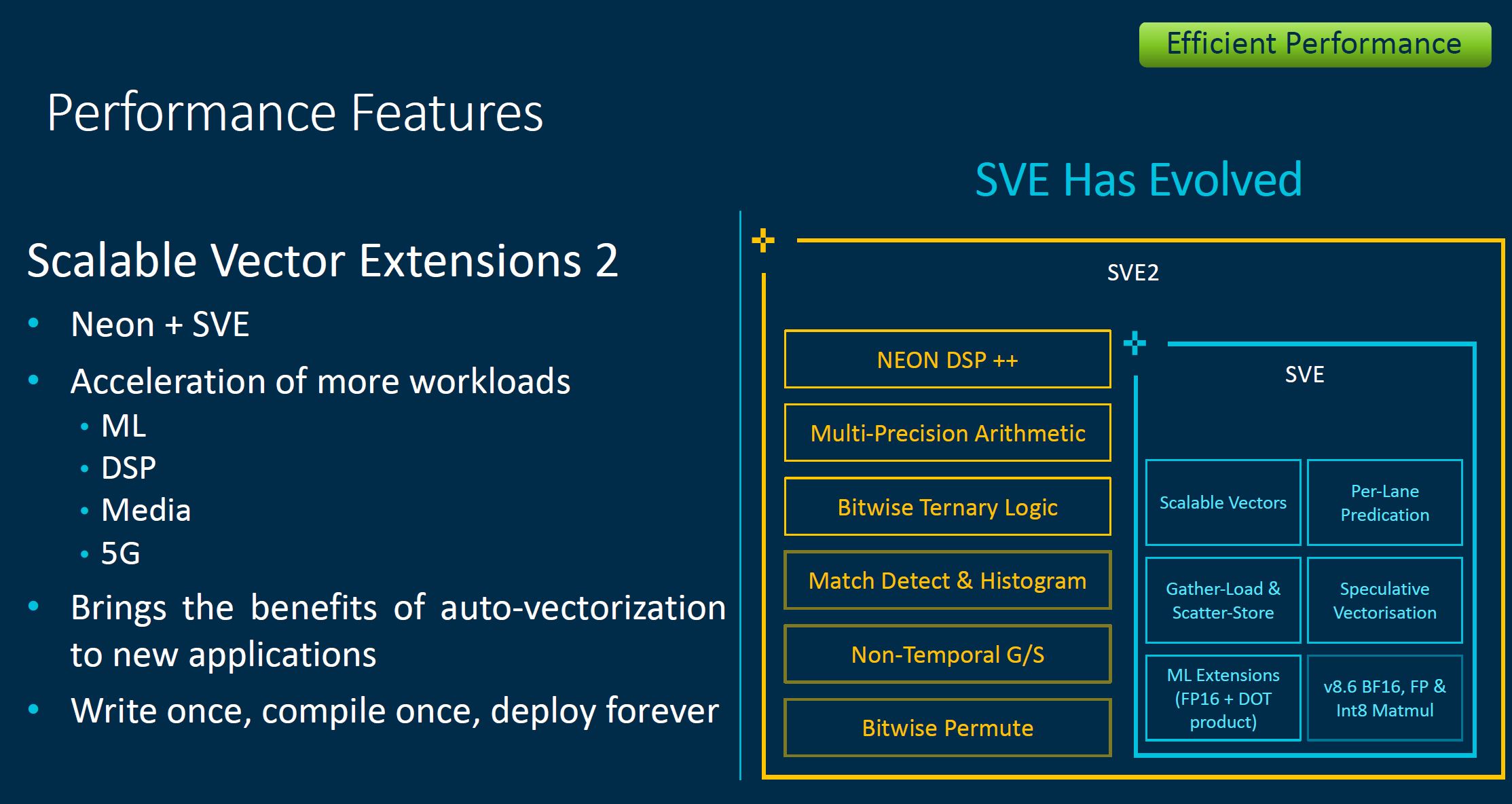
Some of the biggest features of N2 are going to be due to its generation. Neoverse N2 processors will launch when we see technologies such as DDR5 and CXL. As a result, systems are set to get more complex. For this complexity, Arm has its new Arm CMN-700 which is the coherent mesh interconnect to usher in an era with more complex SoCs. We will discuss the CMN-700 next.




It looks like a 64 core Epyc Milan offers over 2 TFLOPs (Source: https://www.microway.com/knowledge-center-articles/detailed-specifications-of-the-amd-epyc-milan-cpus/) per CPU and costs less than the 3.072 TFLOPs offered by the dual CPU PrimeHPC FX700 costing U$40K (Source: https://www.fujitsu.com/global/products/computing/servers/supercomputer/specifications/).
Excellent for ARM CPUs to hold the top Supercomputer spot, but cost / power / physical space / etc. all come into play – (highly capable) monkeys on typewriters.
If I wanted to pay almost 2x I could go with IBM’S POWER instead of AMD’s Milan.
Hurray for ARM, but I am skeptical about their ‘win’ (and I’m not talking about their placement in the TOP 500 spot, which I don’t dispute). Based on the FX700’s pricing and the software (even hardware) infrastructure I would choose the competition.
But, competition is great (for the customer); whichever team you prefer.